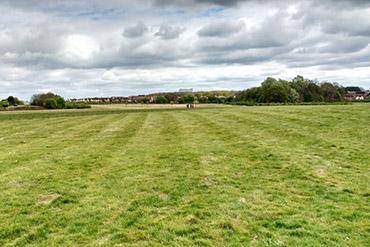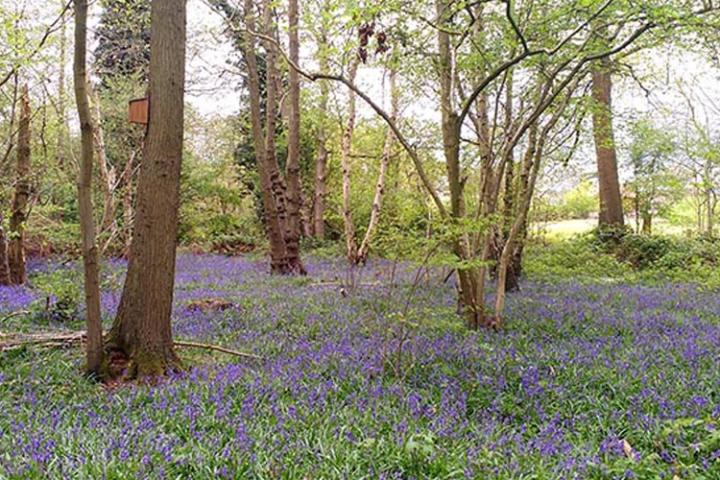Peacock meadows is 36 hectares of grassland, meadows and woodland all linked through green corridors and public footpaths.
This area, which was once arable farmland and then a turf farm, is now managed as a public open space that offers a beautiful and tranquil environment to relax and enjoy.

Nesting season
Skylarks and their chicks are open to disturbance from dogs.
During the nesting season from March to August, dogs should be kept under close control.
Facilities
Peacock Meadows has:
- a good footpath and cycle path links to all parts of Jennett’s Park and beyond
- the Bracknell Forest Ramblers Route which passes along the eastern edge of the site
- areas of ancient woodland - West Garden Copse and Big Wood, with Tarmans Copse, Wykery Copse and Jennett’s Hill lying nearby
- species rich grasslands that are also fantastic places for wildflowers
- a new community orchard, containing 16 fruit trees, 2 wild service trees and a native hedgerow
- 3 monoliths at different locations, which contain brass rubbings and information about the site
- public art sculptures
Getting there
By car
There is a small car park located off Swift Fields. The map reference is 845 678.
By foot
The site can be accessed on foot using 8 entrances around the park.
what3words
A what3words address refers to a 3 metre square location. Select the link or enter the 3 words into the free what3words app to find it:
- park location: ///spit.frog.dirt
- parking is available at: ///sparks.transit.worker
Explore the site
| Attachment | Size |
|---|---|
| 3 MB |
Park management
The south field is regularly mown to provide a large space for events.
Wildflower meadows will be managed by carrying out annual hay cuts after flowering plants have set seed. This will help the meadow to flourish and prevent thistles, docks, brambles and scrub from taking over.
Wildlife
The wildflower meadows contain species such as meadow buttercups, oxeye daisies, devil’s bit scabious and birds-foot trefoil. These put on a good floral display in the spring and summer.
The site is also home to skylarks. These can sometimes be seen and heard in song flight, rising vertically with a continuous high pitched trilling.
Fields and hedgerows support birds such as rook, and linnet, with the endangered yellowhammer also having been recorded here. As newly planted hedges and woodland edge planting develop, it is hoped these will return in greater numbers.
The ground flora in West Garden Copse includes bluebells, and several ancient woodland species such as dog’s mercury, wood anemone and wood sorrel. At least 6 species of birds can be found in the copse including wren, robin, blackbird, blue tit, great tit and chaffinch.
Invertebrates are most numerous in the woods and woodland edges and you may see butterflies such as the holly blue, peacock and small skipper.
A new community orchard is being established. When it is fully mature it will provide spring blossom and autumn crops of apples, cherries, damsons and pears. This will attract wildlife such as pollinators, bees, butterflies and birds.

